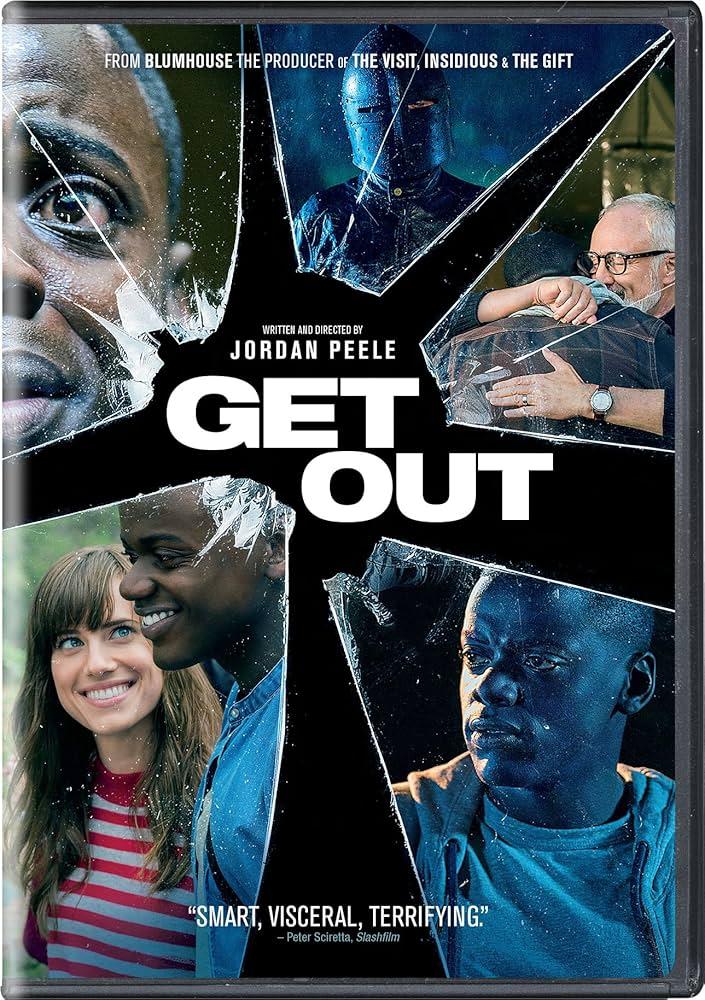In recent years, Jordan Peele‘s “Get Out” has sparked widespread discussion and debate, not only for its thrilling narrative and cinematic ingenuity but also for its pointed commentary on race relations. Released in 2017, the film cleverly intertwines horror and satire to explore the complexities of racism in modern America. However, as the dust of its initial impact settles, a critical question emerges: does “Get Out” hit its targets with subtlety, or is its approach too on-the-nose? This article delves into the intricacies of Peele’s storytelling, examining whether the film’s directness in addressing racial issues enhances its message or risks oversimplifying a multifaceted dialogue. Through a balanced analysis, we aim to explore how the film’s clarity and boldness contribute to or detract from its cultural and artistic significance.
Examining Symbolism and Subtlety in Get Outs Narrative
Jordan Peele’s Get Out employs a rich tapestry of symbolism and subtle narrative techniques to explore the intricacies of race relations. While some critics argue that its themes are overt, the film intricately weaves these elements to create a nuanced commentary. The sunken place serves as a powerful metaphor for the marginalization and voicelessness experienced by Black individuals, encapsulating the psychological and societal suppression faced in predominantly white spaces. This imagery, combined with the unsettlingly polite yet sinister Armitage family, critiques the veneer of racial tolerance that masks deep-seated prejudices.
- The use of everyday objects, like the teacup, symbolizes control and manipulation.
- Deer imagery subtly alludes to racial stereotypes and victimization.
- The bingo game is a chilling representation of the commodification of Black bodies.
Despite these elements, some argue that the film’s directness dilutes its subtlety. However, it’s the juxtaposition of overt horror with these layered symbols that invites viewers to confront uncomfortable truths about race. By balancing blatant social critique with deeper, symbolic undercurrents, Peele crafts a narrative that resonates on multiple levels, urging a reflection on both the explicit and implicit facets of racial dynamics.

Analyzing Audience Reactions to Racial Themes in Get Out
Audience reactions to Jordan Peele’s Get Out offer a fascinating insight into the public’s reception of films that tackle racial issues head-on. Some viewers praise the film for its bold approach, appreciating its ability to weave social commentary into a horror narrative. They argue that the film’s explicit themes are necessary to spark crucial conversations about race and privilege, which often remain undiscussed in mainstream media. This group views Peele’s work as a catalyst for dialogue, shedding light on microaggressions and systemic racism in a way that is accessible and engaging.
Conversely, others feel that the film’s approach is too overt, leaving little room for subtlety or personal interpretation. Critics in this camp suggest that the film’s messages are delivered with a heavy hand, which can detract from its artistic merit. They argue that the lack of nuance may alienate some viewers who prefer a more understated exploration of complex themes. Despite these differing opinions, it’s clear that Get Out has succeeded in igniting a broad spectrum of discussions, which include:
- The role of horror as a vehicle for social commentary
- The effectiveness of explicit versus implicit storytelling
- The impact of racial themes on diverse audiences
Balancing Directness and Nuance in Storytelling
In the intricate dance of storytelling, finding the equilibrium between directness and nuance is essential, particularly when addressing complex themes like race relations. Jordan Peele’s “Get Out” is a film that straddles this line, employing a horror narrative to explore the subtle and overt manifestations of racism. Some argue that the film’s approach is too on-the-nose, pointing to scenes where the symbolism is overt and dialogues that directly address racial issues. This directness ensures that the message is unmistakable, making it accessible to a broad audience.
However, others see this straightforwardness as a powerful tool, one that doesn’t shy away from uncomfortable truths. The film employs a variety of storytelling techniques that enhance its impact:
- Symbolic Imagery: The use of the sunken place as a metaphor for marginalization.
- Character Archetypes: Characters that embody microaggressions and systemic racism.
- Satirical Elements: Humor that highlights the absurdity of racial stereotypes.
By balancing directness with nuanced storytelling elements, “Get Out” engages viewers in a dialogue about race that is both explicit and thought-provoking. Whether this approach resonates or feels overly simplistic depends largely on individual perspectives and expectations of what a film should accomplish in the realm of social commentary.

Recommendations for Enhancing Subtext in Social Commentary Films
For filmmakers aiming to deepen the layers of subtext in social commentary films, subtlety can be a powerful tool. Engage audiences with nuanced storytelling that allows them to draw their own conclusions. By weaving in layers of complexity and avoiding overt exposition, filmmakers can invite viewers to explore the themes and messages at their own pace. Consider the use of metaphor and symbolism as a means to add depth, encouraging audiences to engage in post-viewing discussions and interpretations.
- Employ Visual Metaphors: Use imagery and cinematography to convey underlying messages. Symbolic elements can provide a visual representation of themes without explicit dialogue.
- Develop Multi-dimensional Characters: Create characters with diverse backgrounds and motivations, allowing for a more nuanced portrayal of societal issues.
- Layered Dialogue: Write conversations that have double meanings, offering insights into the characters’ perspectives while hinting at broader social critiques.
- Subtle World-Building: Design settings and environments that reflect societal norms and biases, allowing the backdrop to reinforce the film’s themes.
Challenge conventional narratives by introducing unexpected twists and perspectives that provoke thought and discussion. By avoiding didactic storytelling, filmmakers can create a more engaging and thought-provoking experience that resonates with audiences long after the credits roll.
